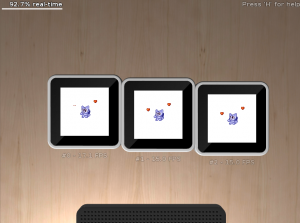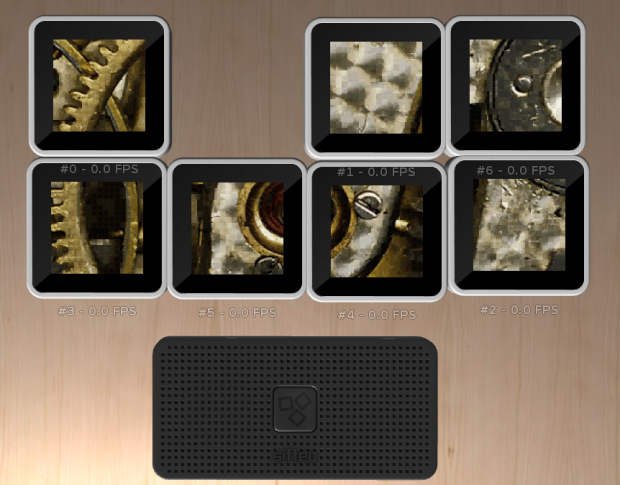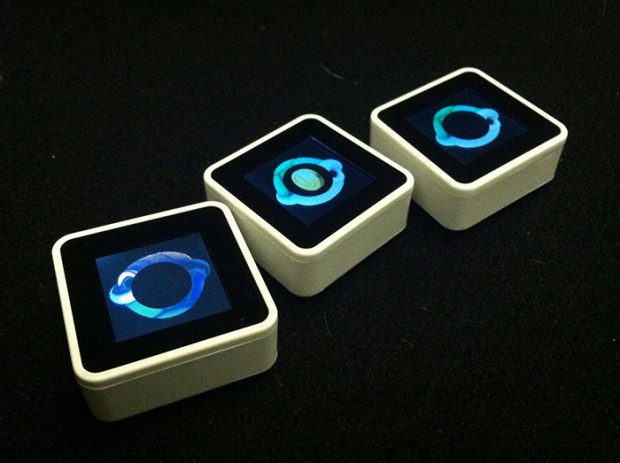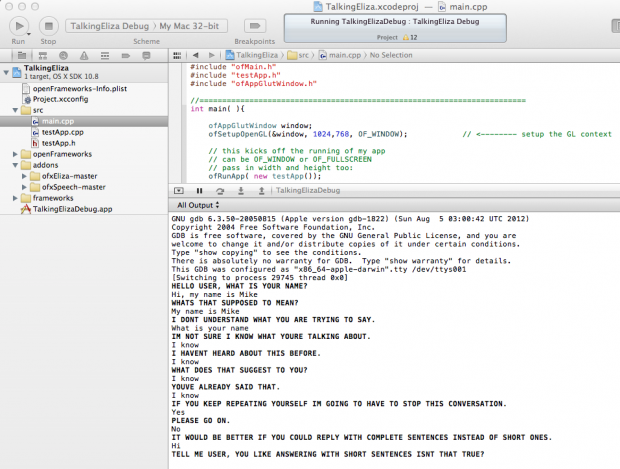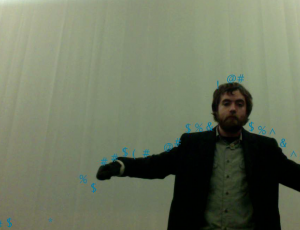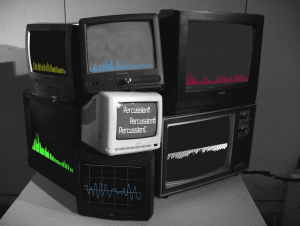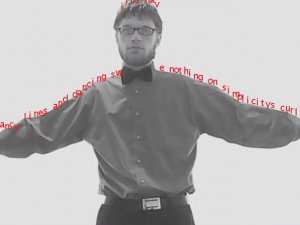For this implementation of Textrain I made a Letter class and kept track of an array of Letter objects. Each character from the string is stored in this array and updated via for loop in the draw function. They detect the brightness of the pixel immediately beneath them and only drop if the pixel is bright. There is also a function that fades the letters from teal to navy blue over time. The string is the first line of the e.e. cummings poem ‘anyone lived in a pretty how town,’ which really doesn’t have any significance other than the fact that it’s great.
GitHub -> soon, having trouble with it currently…
Code!
import processing.video.*;
Capture cam;
int height = 480;
int width = 640;
int g = 0;
int b = 100;
boolean flipG = false;
boolean flipB = true;
class Letter {
int y;
int x;
int speed;
char c;
Letter(char character, int xPos, int yPos) {
c = character;
x = xPos;
y = yPos;
speed = (int) random(1, 2);
}
}
ArrayList currentLetters;
Letter testLetter = new Letter('a', 50, 50);
void setup() {
size(width, height);
background(255);
frameRate(10);
textSize(18);
cam = new Capture(this, width, height);
cam.start();
smooth();
currentLetters = new ArrayList();
String poem = "anyone lived in a pretty how town (with up so floating many bells down)";
int xInit = 0;
int yInit = 0;
for (int i=0; i < 71; i++) {
if (i<33) yInit = (int)random(-10, 10);
else yInit = (int)random(-15, -25);
currentLetters.add(new Letter(poem.charAt(i), xInit, yInit));
xInit += (9 + (int)random(-3, 3));
if (xInit > width) xInit = 9;
}
}
void draw() {
cam.read();
cam.loadPixels();
pushMatrix();
translate (width, 0);
scale(-1, 1);
image (cam, 0, 0, width, height);
popMatrix();
fill(0, g, 100);
for (int i=0; i < 71; i++) {
Letter curr = currentLetters.get(i);
int index = width*curr.y + (width-curr.x-1);
index = constrain (index, 0, width*height-1);
if ((brightness(cam.pixels[index])) > 105) curr.y += curr.speed;
else {
while ((curr.y > 0.0) && ((brightness(cam.pixels[index])) < 95)) {
curr.y -= .025;
index = width*curr.y + (width-curr.x-1);
index = constrain (index, 0, width*height-1);
}
}
text(curr.c, curr.x, curr.y);
if (curr.y >= height) {
curr.y = (int)random(-15, 15);
curr.speed = (int)random(1, 2);
}
}
if(!flipG) {
if (g<100) g++;
else flipG=true;
}
else if(flipG) {
if (g>0) g--;
else flipG=false;
}
if(!flipB) {
if (b<150) b++;
else flipB=true;
}
else if(flipB) {
if (b>0) b--;
else flipB=false;
}
}
